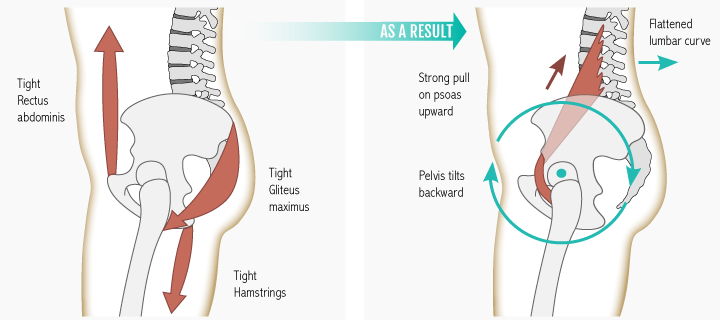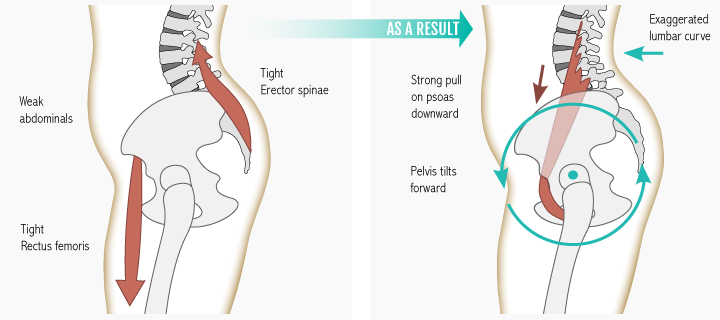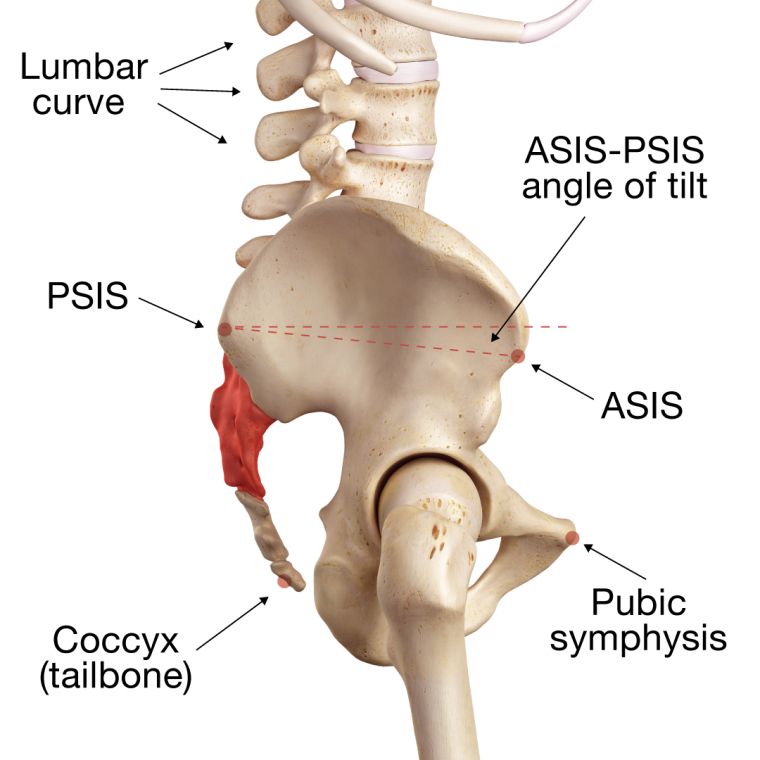A great place to start in assessing your pelvis is examining your standing posture—specifically, the position of your spine as it attaches to your pelvis. Your spine has two natural curves: slight flexion in your thoracic spine (kyphosis), and slight extension in your lumbar spine (lordosis). When the musculature of your hips is out of balance, your spine will deviate from its neutral curves, placing you at risk of pain and injury.
To tell if your pelvis is out of balance, stand sideways by a mirror (or even better, have a friend take a photo of you from the side).
Out of all the muscles that work to flex the hip, your psoas is the strongest. Helping you walk, run, and stand. Because it is so central to human movement, the iliopsoas can cause some major problems when it is too tight and too short. It can pull your pelvis into an anterior tilt, compressing the spine and pulling your back into hyperextension (I call this "duck butt"). If your Hamstrings and Gluts are tight it can flatten the natural curve of your lumbar spine ("flat butt"), making it vulnerable to injury, and cause pain and instability at the front of the hip.


How to find a neutral pelvis?
The movement of the pelvis is important to be aware of in most Yoga positions as it has a significant effect throughout the body. A neutral pelvis is the position optimal for spinal health. This is the position of minimal stress to all muscle, tendon, and ligament attachments to the pelvis.

To understand pelvic tilt, find your ASIS – a small bony projection at the upper front of the hip bones. When this point moves forward and down, the pelvis is in a state of anterior tilt. When the ASIS moves up and back, towards the spine, this is posterior tilt. A chronic tilt in either direction is a likely cause of injury, instability or dysfunctional movement. A neutral position in the pelvis is one in which the ASIS is in vertical alignment with the pubic crest.
Try it out in your YOGA practice! Observe the principles of biomechanics in both the seated and standing poses. Pelvic tilt has a dramatic impact on the entire body, and a correct positioning makes a huge difference in performing your asana effectively.